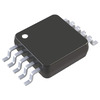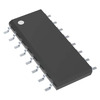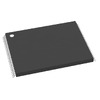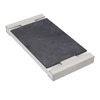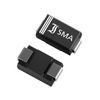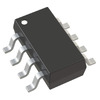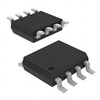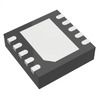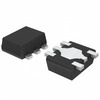DHT11 Sensor Guide
The DHT11 sensor has become a mainstay in temperature and humidity monitoring due to its affordability and ease of use. This article explores the basic aspects of the DHT11, including its pin configuration, key features, and practical applications, along with a comparison to alternative sensors like the DHT22. From smart home automation to agriculture, the DHT11 sensor is versatile and capable, helping you achieve reliable environmental data tracking across various projects. With insights into its strengths, limitations, and integration tips, this article will guide you through maximizing the potential of the DHT11 sensor in actual applications.Catalog
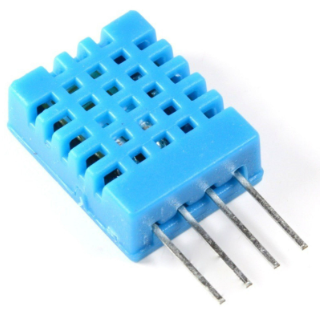
Pinout
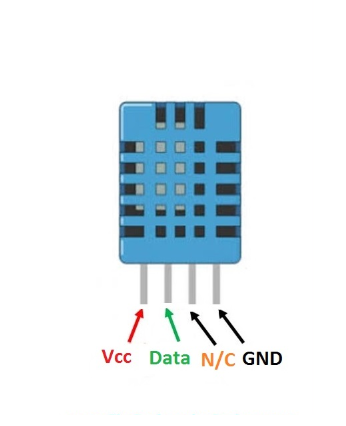
|
Pin# |
Type |
Parameters |
|
Pin#1 |
Vcc |
Provide 3.3V to 5V at this pin. |
|
Pin#2 |
Data |
This pin provides a digital output. |
|
Pin#3 |
N/C |
Not Connected. |
|
Pin#4 |
Ground |
This pin is used for Ground (Connected to 0V). |
DHT11 Overview
The DHT11 is a multifunctional sensor that adeptly combines temperature and humidity measurement capabilities within a compact and efficient design. It employs advanced digital signal technology for output, integrating a resistive sensor for humidity assessment and a Negative Temperature Coefficient (NTC) sensor that ensures precise temperature readings. At the helm of its operations is a robust 8-bit microcontroller, enhancing not only the sensor's reliability but also its response time, while effectively mitigating environmental interferences. This durable construction enables the DHT11 to maintain exemplary accuracy and performance under varying conditions, rendering it an economical choice for a wide array of applications.
The DHT11's operating parameters are notably defined, functioning optimally within a temperature range of 0 to 50 degrees Celsius, while its humidity measurement capabilities extend from 20% to 80%, with an impressive accuracy of ±2% for humidity and ±2 degrees Celsius for temperature readings. This positional clarity makes the DHT11 suitable for a spectrum of applications, including HVAC systems, home automation projects, and climatic monitoring systems. Its straightforward digital output facilitates easy interaction with microcontrollers such as Arduino and Raspberry Pi, thereby simplifying the integration process. The sensor's compact footprint and low power consumption add to its allure, mostly in scenarios where efficient use of space and energy is of the essence.
In practical applications, deploying the DHT11 can yield profound enhancements in environmental condition monitoring and control. For instance, in the world of smart agriculture, you can leverage this sensor to collect data on greenhouse climatic conditions. This timely information allows you to make educated decisions regarding irrigation and ventilation, ultimately benefiting crop health and optimizing yield. Furthermore, the significance of precise temperature and humidity measurements is pronounced in industries like pharmaceuticals and food production, where adherence to specific environmental standards is used for maintaining quality assurance.
Features
|
Feature |
Specification |
|
Voltage Range |
3.5V to 5.5V |
|
Operating Current (Measuring) |
0.3mA |
|
Standby Current |
60µA |
|
Data Output |
Serial |
|
Temperature Range |
0°C to 50°C |
|
Humidity Range |
20% to 90% |
|
Resolution |
16-bit for temperature and humidity |
|
Accuracy |
±1°C for temperature, ±1% for humidity |
Applications
The DHT11 sensor finds a role in a diverse array of applications, extending its influence across various fields. Its functionality is instrumental in improving both accuracy and efficiency in data collection and environmental stewardship.
Monitoring Temperature and Humidity Levels
The ultimate application of the DHT11 sensor is the actual monitoring of temperature and humidity. Reliable readings are active for achieving ideal conditions in environments like greenhouses and server rooms, where the stakes are often high. With its capacity for immediate data provision, the sensor enables timely interventions, which can be lifesaving in settings sensitive to fluctuations. For instance, in agriculture, you can rely on the DHT11 to strike the right balance between moisture and temperature, which not only protects crops but can also lead to better quality yields that resonate with market demands.
Setting Up Local Weather Stations
DHT11 sensors are often employed in the creation of local weather stations. By connecting this sensor with microcontrollers, you can build cost-effective, efficient weather-monitoring systems. This do-it-yourself approach enriches community engagement while deepening local insights into climate variations. Over time, the aggregated data can form a tapestry of information that enhances understanding of regional weather patterns—offering perspectives that might be overlooked by more centralized meteorological entities.
Automating Climate Control Systems
Incorporating DHT11 sensors into climate control systems pave the way for automation that boosts both energy efficiency and comfort for occupants. The interplay between these sensors and smart home setups allows for actual adjustments of heating and cooling systems. This synergy not only promotes energy conservation but also reduces strain on HVAC equipment, which can lead to longer lifespans for such devices. Anecdotal evidence from various smart home applications indicates that this automation can result in remarkable reductions in energy expenses while elevating the standard of living.
Conducting Environmental Assessments
In environmental studies, DHT11 sensors yield dangerous data that facilitate an exact understanding of microclimates and ecological dynamics. Their affordability and ease of use empower you to gather comprehensive data across a variety of ecosystems. Such information can inform better conservation strategies that are tailored to address the specific requirements and obstacles faced by unique habitats. This utilization highlights the role of technology in fostering ecological awareness and encouraging sustainable methodologies.
Equivalents
• DHT22
• AM2302
• SHT71
Utilizing the DHT11 Sensor
The DHT11 sensor emerges as a dependable tool for assessing temperature and humidity. Its pre-calibrated design and serial data output enhance integration ease, allowing you to transition seamlessly into practical applications. This sensor is not just a piece of technology; it embodies the intersection of efficiency and innovation, appealing to those who appreciate streamlined processes in their projects. Connection diagrams offer a glimpse into a world where setup times are minimized, inviting you to engage with the technology more intimately.
Connection Diagram for DHT11
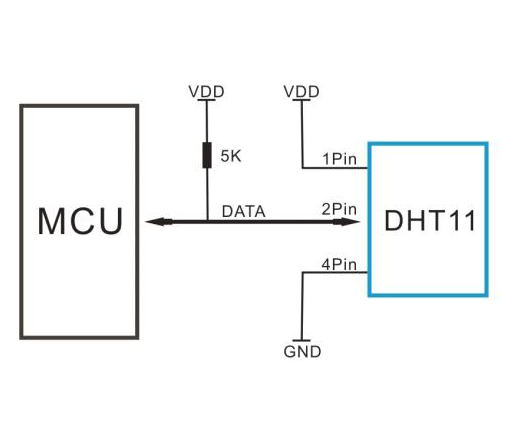
The connection setup is refreshingly straightforward: a data pin connects to an I/O pin of the microcontroller, complemented by a 5K pull-up resistor that ensures reliable data transmission. Streamlined libraries for platforms like Arduino facilitate rapid deployment. Working with other microcontrollers, consulting the detailed datasheet offers dangerous insights into the 8-bit data packets that carry temperature and humidity data. Data retrieval involves a momentary dip of the I/O pin to low before returning it to high, a motion that echoes the rhythm of interaction between the sensor and the microcontroller.
Integrating DHT11 with a Microcontroller
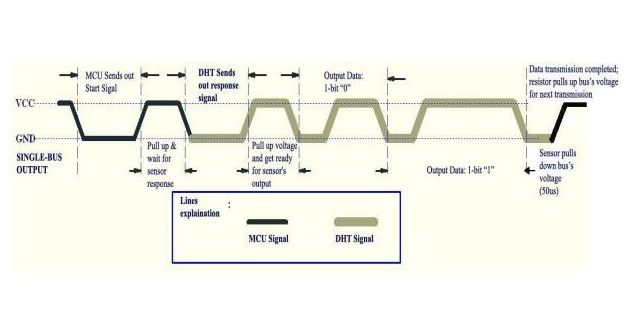
Package

About us
ALLELCO LIMITED
Read more
Quick inquiry
Please send an inquiry, we will respond immediately.
Frequently Asked Questions [FAQ]
1. DHT11 vs. LM35?
The DHT11 sensor serves a dual purpose: it measures both temperature and humidity, making it mostly well-suited for settings where both aspects remain a must. On the other hand, the LM35 is exclusively tailored for temperature measurements. When looking at power consumption, the LM35 stands out with its minimal current usage and wider temperature range, which can be beneficial in a variety of situations. In contrast, the DHT11 is engineered for low-voltage operation, offering a straightforward approach to basic environmental monitoring. Recognizing the strengths and weaknesses of each sensor type can significantly influence practical decision-making.
2. What difference is between the DHT11 Sensor and Module?
Differentiating between a bare DHT11 sensor and a complete module is active for aiming for efficiency. The bare sensor features four pins, with only three required for operation, often requiring additional external components for full functionality. Alternatively, acquiring the complete module ensures the inclusion of a built-in filtering capacitor and a pull-up resistor, streamlining the integration process immensely. This modular approach not only saves time but also enhances project efficiency, paving the way for smoother workflows in experimental and prototype development. You can often reflect on how serious it is to select the right configuration to maximize performance.
3. What is the accuracy of the DHT11 sensor?
The DHT11 sensor boasts an accuracy rate of 1%. While this level of precision might suffice for numerous basic applications, you can advise a thorough assessment of environmental demands to identify if higher accuracy is warranted. Insights from experiences indicate that even slight discrepancies in readings can significantly impact project results, emphasizing the need to choose sensors that align with detailed project objectives.
4. What is the use of a DHT sensor?
DHT sensors find wide applications across various fields, notably in HVAC systems and weather stations, where precise temperature and humidity data are key to optimizing comfort and functionality. They also play a chief role in environments needing strict humidity control for safety, such as greenhouses and museums. Engaging with detailed case studies in these areas highlights the complexities and challenges encountered, further proving the necessity of selecting the right sensors tailored to specific applications.
5. What does DHT11 ensure by using the digital signal acquisition technique and temperature & humidity sensing technology?
Embracing digital-signal technology in sensors such as the DHT11 brings about increased reliability and long-lasting performance stability. This technology also enhances noise immunity, ensuring consistent readings even in electrically turbulent settings. You can adopt digital solutions and often share positive experiences that showcase how innovations in sensor design can yield more precise and reliable measurements.
6. What type of humidity measurement component does DHT11 have?
The DHT11 employs a resistive humidity sensing technique in conjunction with an NTC (Negative Temperature Coefficient) temperature sensor. This integration enables a holistic evaluation of environmental conditions. Gaining an understanding of how these sensors operate can assist you in fine-tuning their setups; for example, proper calibration is basic to maintain accurate measurements over time, a tip derived from extensive application experiences.
7. DHT11 vs. DHT22?
In comparing the DHT11 and the DHT22, it becomes clear that while the DHT22 provides greater accuracy and a broader operational range, the DHT11 appeals to you due to its affordability and compact design. In addition, the DHT11 features a faster sampling rate of 1 Hz, compared to the DHT22's 0.5 Hz. Those in the field must navigate the trade-offs between these two sensors, weighing factors like project specifications and financial limitations. You can convey the significance of balancing performance needs with budgetary considerations, guiding them toward the most fitting choice for their specific projects.

A Complete Guide to SN74HC14N
on November 15th
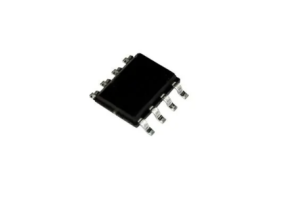
All About the M95512-R 512-Kbit EEPROM: Pinout, Datasheet, and Substitutes
on November 15th
Popular Posts
-

What is GND in the circuit?
on January 1th 3285
-

RJ-45 Connector Guide: RJ-45 Connector Color Codes, Wiring Schemes, R-J45 Applications, RJ-45 Datasheets
on January 1th 2822
-

Understanding Power Supply Voltages in Electronics VCC, VDD, VEE, VSS, and GND
on November 20th 2672
-

Fiber Connector Types: SC Vs LC And LC Vs MTP
on January 1th 2271
-

Comparison Between DB9 and RS232
on January 1th 1890
-

What Is An LR44 Battery?
Electricity, that ubiquitous force, quietly permeates every aspect of our daily lives, from trivial gadgets to life-threatening medical equipment, it plays a silent role. However, truly grasping this energy, especially how to store and efficiently output it, is no easy task. It is against this background that this article will focus on a type of coin cell battery that may seem insignificant on the...on January 1th 1849
-

Understanding the Fundamentals:Inductance Resistance, andCapacitance
In the intricate dance of electrical engineering, a trio of fundamental elements takes center stage: inductance, resistance, and capacitance. Each bears unique traits that dictate the dynamic rhythms of electronic circuits. Here, we embark on a journey to decipher the complexities of these components, to uncover their distinct roles and practical uses within the vast electrical orchestra. Inductan...on January 1th 1816
-

What Is RF and Why Do We Use It?
Radio Frequency (RF) technology is a key part of modern wireless communication, enabling data transmission over long distances without physical connections. This article delves into the basics of RF, explaining how electromagnetic radiation (EMR) makes RF communication possible. We will explore the principles of EMR, the creation and control of RF signals, and their wide-ranging uses. The article ...on January 1th 1814
-

CR2430 Battery Comprehensive Guide: Specifications, Applications and Comparison to CR2032 Batteries
What is CR2430 battery ?Benefits of CR2430 BatteriesNormCR2430 Battery ApplicationsCR2430 EquivalentCR2430 VS CR2032Battery CR2430 SizeWhat to look for when buying the CR2430 and equivalentsData Sheet PDFFrequently Asked Questions Batteries are the heart of small electronic devices. Among the many types available, coin cells play a crucial role, commonly found in calculators, remote controls, and ...on January 1th 1805
-

Comprehensive guide to hFE in transistors
Transistors are crucial components in modern electronic devices, enabling signal amplification and control. This article delves into the knowledge surrounding hFE, including how to select a transistor's hFE value, how to find hFE, and the gain of different types of transistors. Through our exploration of hFE, we gain a deeper understanding of how transistors work and their role in electronic circu...on November 20th 1793












